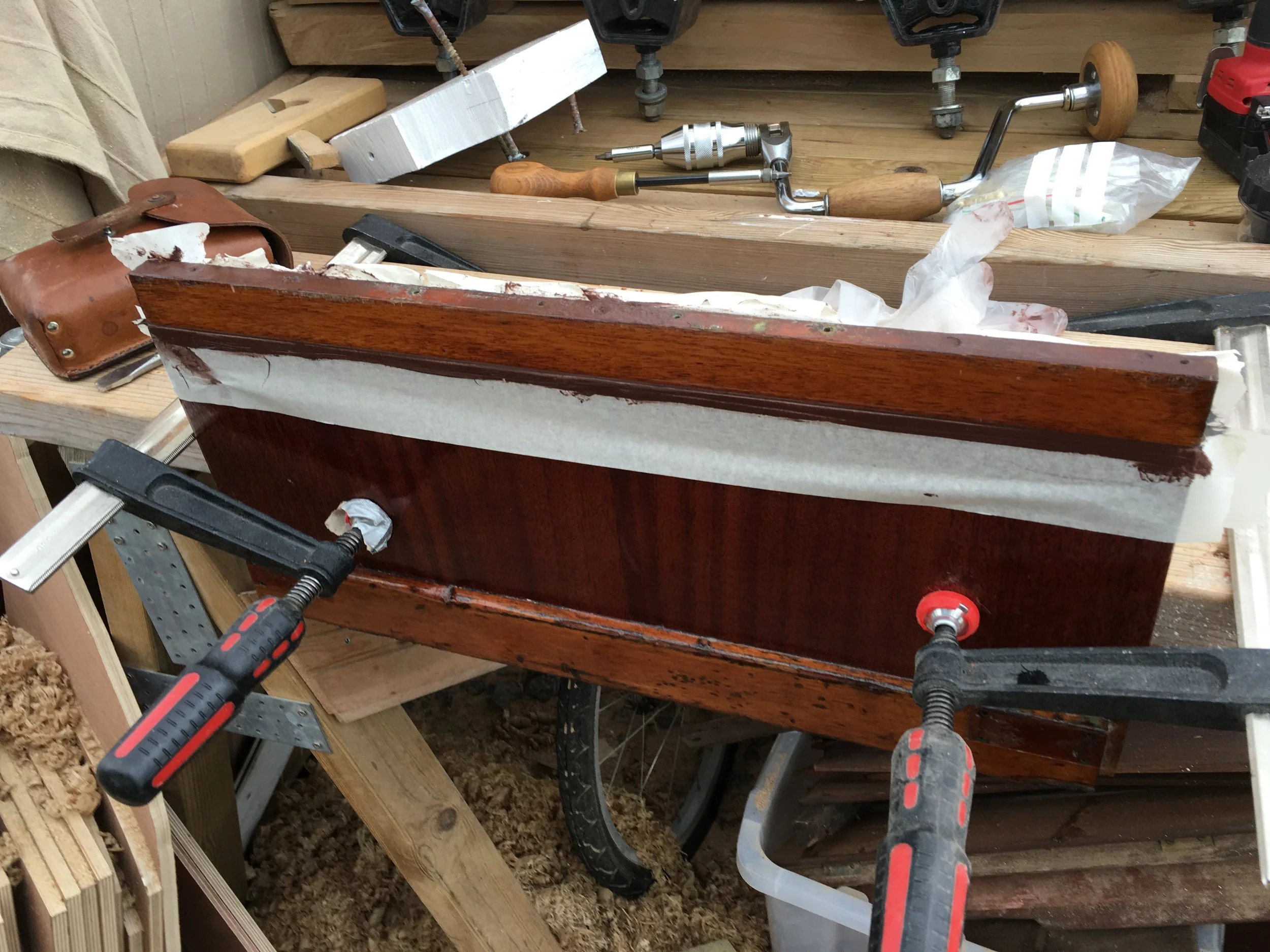Frames repair - removing rivets, cutting scarf joints
I’ve started repairing broken steamed frames, beginning in the engine room.
The minimum plan is to fix these 8 frames and the big frame (for which I’ve made a laminated, bent part) to be able to put Meritaten into sea. Once I have the engine back I will no longer have access there so it seemed logical to start from these frames.
This place is a curse to work in: not only there are still things in a way - propeller shaft, mountings for water cooling etc - it is also very narrow there so I work in very awkward position with limited access for tools.
The first step is to remove affected rivets and their neighbours. Some measurements in relation to existing holes (engine bed) are needed to later find the plugs on the outside. Once there I scrap the paint to localise the plug. It takes long time to cleanly remove the plug - and not to damage surrounding wood. Most of the time it goes well but mishaps happen.
Angle grinder removes rivet heads on the inside and then I can back the rivet with a hammer and a punch spike. To prevent enlarging the rivet hole I used then a nail which has smaller diameter than existing hole.
This has a drawback thou - in one case I missed the rivet and the nail went into the plank and through the hull. I need to repair it with small wooden plug and glue. Probably polyurethane as epoxy might fail there (I need to do some reading on it first).
Then, with angle grinder and 40-grid disk I remove the bulk of affected frame to form a flat surface, spanning between both parts of repaired frame. Final shaping and truing is done with a block plane - the only tool which can fit there - hardly!
So far I’ve prepared five out of eight scarfs.
Quarter-sawn oak pieces will be glued onto scarfs. To prevent from gluing them also to freeboard planks I will put thin strips of oak in between scarfs. These pieces will be attached with stainless staples, to hold them in place before gluing and they will be generously bedded in Farm, to prevent water going under the frame. The challenge here is to squeeze the bedding also under scarfs - since rivets are now gone these parts rise a little and I’m afraid of gaps which might be left there after gluing replacements.
It is still too cold to use epoxy: GFlex has lowest working temperature 4 degrees. While it is 5 or 6 degrees outside the boat is still in winter sleep with hull temperature just above zero.
While preparing replacement wood blocks for frames I took care to have a proper grain alignment: annual rings should be parallel to rivets while medullary rays should be opposed by rivets. It seems that one who was framing my boat did not follow that - it might be the source of problems I now face.
For comparison there are five pieces cut away from the big laminated frame (which broke) originally on Meritaten. On the bottom is a sample piece of quarter sawn oak showing already checking along medullary rays. If rivets go along the rays they augment this checking and the frame splits.
To get some rest from yoga in the tight bilge I switched to finishing attaching the new floor timber. Originally there were thick and long rivets which connected the thick frame and the floor timber. I could not get copper nails of that size so I decided to substitute them with silicon-bronze threaded rods. For rivet-like fit I drilled holes of diameter equal to internal diameter of the thread. This way the rod is screwed into wood and tight fit is perfect. In two cases I felt that wood in the old frame is too soft to my taste so I drilled wider hole and installed thicker rod, to get again the tight fit.
The whole idea is that all fasteners should work at the same time under load, yielding joint’s maximum strength. That’s why it is a mistake to mix screws and rivets in the same joint: screws having less tight fit than rivets will start taking load only after rivets are already deforming. This makes the joint weak.
To prepare the laminated frame for gluing I drilled small through-holes for M4 threaded rod. This size is smaller than final rivets for these joints so I can use the old holes in planking.
I was lucky that I had a possibility to clamp in this area - opposite berth served as a clamp support so this job was fairly easy for just one person.
Wooden washers and M4 nuts hold the frame in place.
I don’t have such luxury in the engine compartment - no place there to hold the clamp - so I’ll need some help to hold the replacement blocks while I drill from the outside.

























